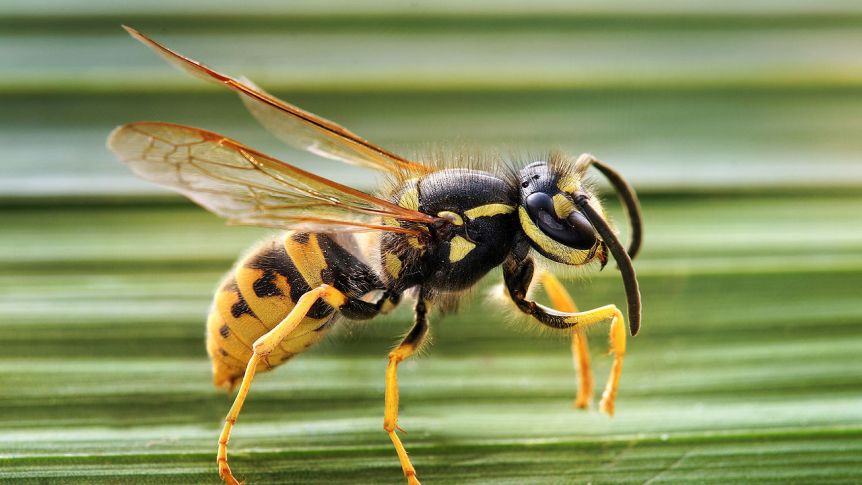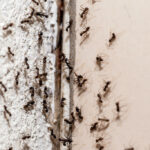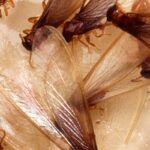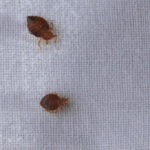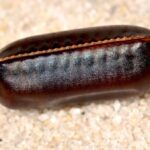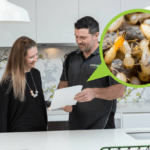European wasps are one of the most annoying pests from summer to autumn in Melbourne. They invade our homes and can spoil that BBQ with family or friends! Not only do they crash the party they also become very aggressive when asked to leave! Are they good for anything?
Before we discuss how to get rid of European wasps, let’s learn a little more about them…
What are they?
The European wasp is an aggressive species of wasp, not native to Australia. They were first discovered in Tasmania in 1959. By 1978 they had been found in South Australia, Victoria, New South Wales and Western Australia. They are now firmly established in Australia.
Being an introduced species means they have no natural predators in Australia. The cold winters of Europe helped control wasp numbers, only allowing a queen to survive a season in hibernation. The milder climates of Australia mean European wasps nests last longer and grow larger.
They live around humans because of readily available food sources, especially sugary drinks and treats. This makes them a danger to us, as they are aggressive and, unlike bees who die after one sting, a European wasp can repeatedly sting a victim.
How can you identify them?
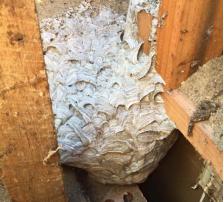
European Wasps’ Nest
European Wasps are brightly coloured in black and yellow. Similar in size to a bee, they are far more energetic and active than a bee.
They have yellow legs and two active black antennae, and the patterning on their body is triangular.
It is often difficult to identify where a European Wasp nest is located as they prefer to burrow underground and in the underbrush. It’s common for European wasp nests to be about the size of a basketball.
They prefer covered locations, such as the base of a tree, within retaining walls, rubbish heaps and compost heaps. They also build their nests in roof cavities and any sheltered part of a building.
How dangerous are European Wasps?
Although very painful, isolated wasp stings rarely cause significant health issues. Nevertheless, the venom contains poisons that can cause hypersensitive reactions in vulnerable victims.
Around one out of 10 victims who are stung two or more times become hypersensitive, which will result in extreme responses to any consequent stings. The most extreme response of all is anaphylaxis, which can be life-threatening.
Evidence from victims tells of how one wasp would dive bomb and sting, which released chemicals to attract more wasps, who would then swarm and sting over and over.
What attracts them?
Prevention is better than cure when it comes to getting rid of European wasps. So, what attracts them in the first place?
They are predators and will eat other insects. But they are also attracted to sugary food and drink. Any opened can of soft drink or plate of food left unattended can be an invitation for wasps. Be sure to cover drinks and open food containers.
Compost heaps in the backyard and fallen fruit from fruit trees can also be a big invitation for European Wasps to come to visit.
What precautions can I take?
You can reduce the number of European wasps foraging around your home and decrease the danger of stings in several ways.
- Remove pet food bowls after your pet has eaten.
- Remove any fallen fruit in your yard.
- Make sure all rubbish bins have tight-fitting lids
- Compost bins should be sealed with a lid
- Cover your food when having a BBQ or meals outside
- Place wasp traps away from entertaining or play areas in your yard
When do European Wasps become a problem?
The lifecycle of a wasp begins in spring after they hibernate for winter. A single Queen lays some eggs in some cells in her nest. These hatches and become larvae for a few weeks. When the larvae become workers, they tend to the nest and build it bigger for more wasps.
The nest grows during summer, so the longer into summer you go, the more wasps you get and a bigger problem they become.
When autumn arrives a new batch of males and queens leave the nest to mate and start a new nest.
However, with the milder climates of Australia, the life cycle of European Wasps has changed. Nests can survive through the winter.
How to get rid of European Wasp Nests?
Wondering how to remove a wasp nest? This is where we highly recommend a professional pest control company for the job. Due to the nature of the wasp and their aggressive behaviour, if you don’t get it right you can be in a world of danger.
If you choose to take the high-risk option of DIY European wasp nest removal, we highly recommend protective clothing and a bee veil. These wasps will not go without a fight and will defend their nest aggressively.
It’s best done in the early morning or late evening when they are least active. And when searching for the nest with a torch, a red-light filter is advised, as wasps are unable to see the red light.
Don’t be fooled, treating the wasp nest when it’s dark is not much safer than doing it in broad daylight. Even though the wasps are less active outside the nest, the first indication of a threat they will be on the warpath and guess who they’re gunning for!!
If you have located a wasp nest around your home or business, you need to give the Melbourne wasp removal experts at Cannon Pest Management a call. Don’t try and take them on yourself as it could lead to a very painful experience.
Call Cannon Pest Management – 1300 025 948. We will save you the pain and suffering!

